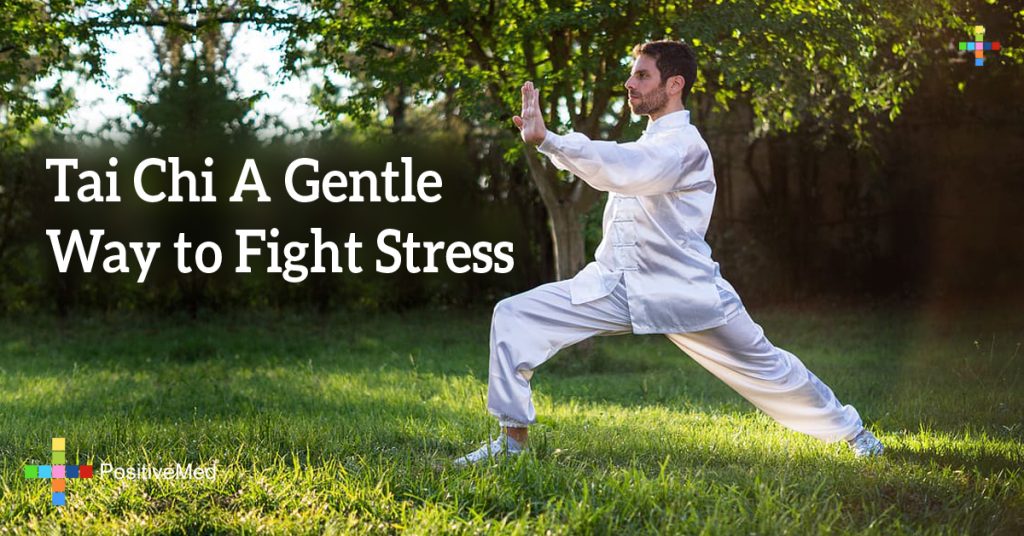
Tai chi A gentle way to fight stress
By PositiveMed-Team
Edited By Stephanie Dawson
Tai chi ch’uan or Taijiquan (which is often shortened to t’ai chi, taji, or tai chi by English speakers and will be referred to as “tai chi” for the purposes of this article) is an internal Chinese martial art practiced for both health benefits and defense training. There are several forms, some widely known for being practiced at a slow movement. Most modern styles of t’ai chi ch’uan trace their genesis to one or more of the five traditional schools: Chen, Sun, Wu, and Wu (Hao).
Tai chi is a noncompetitive, self-paced system of gentle physical exercise and stretching. Each posture flows into the next without pause, ensuring that the body is in constant motion. It’s low-impact and puts minimal stress on muscles and joints, making it ideal for almost every type of person regardless of age or ability. Tai chi movements can also be done from a chair and every good instructor will explain each movement as it is being performed.
While it is a very low-risk form of exercise, remember to consult your doctor before attempting it if you are pregnant or have joint problems, back pain, fractures, severe osteoporosis, or a hernia. Modifications of movements or adjustments may be needed for optimal health and to lower the risk of injury.

This form of exercise has been proven to increase flexibility, decrease stress and irritation, decrease anxiety, increase muscle strength and definition. Some studies say that tai chi is also a gentle way to aid the treatment of skin diseases, high blood pressure, heart disease, digestive disorders, depression, and many other illnesses. There is even some evidence suggestive of tai chi helping with joint pain, enhancing quality of REM cycles, increasing the body’s immune response, as well as lowering cholesterol and improving symptoms of congestive heart failure.
Movements that are slow and deliberate with shifts of body weight from one leg to the other in coordination with upper body movements (sometimes with one leg in the air), challenges balance and one could speculate that it would help improve balance and reduce fall frequency. This is important, as fall-related injuries are a leading cause of death from injuries and disabilities in the elderly. The most serious of these injuries is a hip fracture. One-half of all older adults hospitalized for hip fracture never regain their former level of function.

Although you may want to jump-in to tai chi with some YouTube videos (we’ve even included one in this article) one may also want to consult a tai chi instructor in the area or even join a group that meets outdoors or indoors. This is an excellent low-key way to socialize and soak-in some sunlight, or simply get out of the house. An instructor can help teach certain positions and breathing as well as how to perform them safely. While tai chi has virtually no ill side effects, it is possible to become injured when the positions are not done correctly and those with injuries, chronic conditions, and balance or coordination difficulties will greatly benefit from having other people involved. At some point, one may become confident enough to try tai chi on their own, but if you appreciate the social aspect, consider staying with the group.







